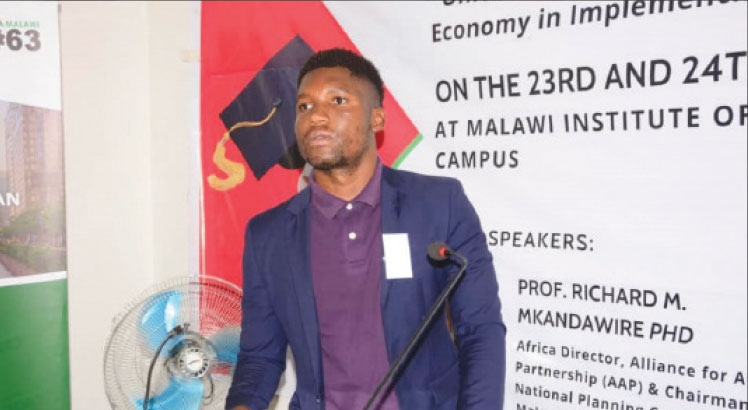The country’s total land developed for irrigation increased by one percent in the 2022/23 financial year, missing by far the National Irrigation Master Plan and Investment Framework which benchmarked five percent as growth rate.
The revelation is contained in the 2023 Annual Economic Report issued by the Ministry of Finance and Economic Affairs following the presentation of the 2023/24 National Budget last Thursday.
It reads: “terms of irrigation development, during the reporting period, the total land developed for irrigation increased by 1 048.2 hectares which is 1 percent and is below the 6 percent targeted minimum annual growth rate for the agriculture sector stipulated in the Comprehensive African Agriculture Development Programme.
“…And also below the 5 percent average stipulated in the National Irrigation Master Plan and Investment Framework (2015-2035).”
Irrigation has been hyped as having potential to fight hunger which haunts the country every year. Meanwhile, analysts fear the sector’s slow growth threatens to subject citizens to continuous food insecurity.
Mgomezulu: Funding has been declining
The economic report also reveals that there was a decrease in the utilisation of irrigation land in the year under review.
“Out of the developed land for irrigation of 146 966 42 hectares, about 79 percent of the developed area was utilised compared to 80 percent utilisation in the previous financial year.
“Utilisation was affected by floods which destroyed some irrigation infrastructure while other irrigation groups failed to raise enough funds to operate diesel-operated pumps or pay for electricity where pumping stations are connected to Escom power,” it further reads.
To improve utilisation, the report says the Department of Irrigation, “continued rehabilitation of flood-damaged infrastructure and promotion of solar powered irrigation technology.”
The report, however, forecasts significant growth in irrigation development in the upcoming financial year which kicks off on April 1 2023.
“Guided by the Irrigation Master Plan and Investment Framework, the sector expects the developed area to increase by 5 200 hectares through private sector investment and continued implementation of Government irrigation programmes and projects such as SVTP, Pride, AIYAP, Mwasip, MRDRMP, that follows a pragmatic approach to irrigation development,” the ministry writes.
The projects and programmes are estimated at $40 960 086 (about K42 billion), according to the report.
“Utilisation rate is expected to reach 85 percent through the promotion of fully functional and financially autonomous farmer organisations water users associations (WUA), and water user groups which are designed to ensure efficiency and sustainability in the utilisation of the (irrigation) schemes.
Agriculture expert Edwin Mwachande blamed slow irrigation development expansion on poor investment and high cost of equipment.
“Malawi has always taken irrigation as a supplement to rain-fed agriculture. There is a lack of serious investment into the irrigation sector such as large technological irrigation schemes and irrigation systems and equipment,” Mwachande, a lecturer at Lilongwe University of Agriculture and Natural Resources, said.
On his part, agriculture researcher Wisdom Mgomezulu observed that funding towards irrigation has been decreasing; hence, contributing to slow growth.
“Over the past decade, the financing has been fluctuating. There was an increase in development partners expenditure in the sector in 2013/14 to 2014/15 mainly by the World Bank and ADB. However, there has been a decrease in recent years due to declined commitments by the development partners,” said Mgomezulu, who leads Avant-Garde Consultants.
The post rrigation registers 1% growth, misses targets first appeared on The Nation Online.
 Moni Malawi
Moni Malawi 

